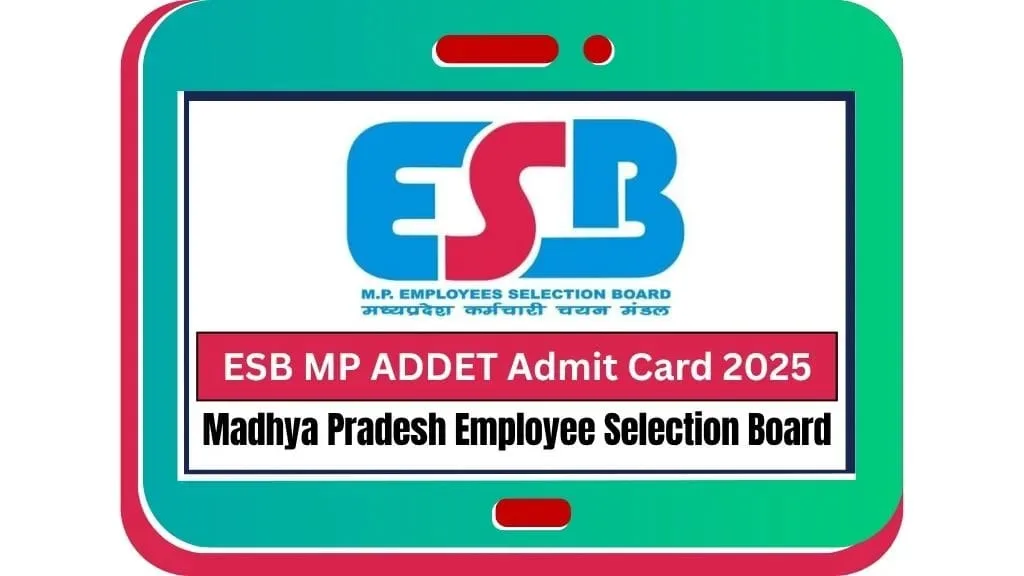In the ever-evolving world of digital content, staying ahead of the curve is paramount. While traditional Search Engine Optimization (SEO) continues to be a cornerstone, Google Discover has emerged as a formidable, yet often enigmatic, source of traffic.
Unlike conventional search where users actively query for information, Discover proactively pushes personalized content to users based on their interests, search history, and engagement patterns. For publishers, understanding and adapting to its new algorithm tips in 2025 is no longer an option but a necessity. This article delves deep into the strategies that will help your content surface in the coveted Google Discover feed.
Understanding the Google Discover Ecosystem in 2025
Google Discover is essentially a highly personalized content feed accessible through the Google app and the Google.com mobile homepage. It’s powered by sophisticated machine learning algorithms that analyze a user’s past interactions, location, and even implied interests to serve up relevant articles, videos, and other web content.
The beauty of Discover lies in its ability to present content to users before they even realize they need it, fostering passive Browse into active engagement. In 2025, this predictive power is even more refined, placing a stronger emphasis on contextual relevance and user intent.
The Shift: From Keywords to User Interest & Entities
While keywords remain foundational for traditional SEO, Google Discover operates on a different plane. Its algorithms prioritize semantic understanding and entity recognition. This means Google is not just looking for keywords but comprehending the meaning behind your content and how it relates to broader topics and concepts.
For instance, if a user frequently engages with articles about “sustainable living,” Discover will prioritize content around related entities like “eco-friendly products,” “zero-waste tips,” or “renewable energy.” Your content needs to connect with these interest graphs rather than just matching isolated keywords.
Core Pillars of Google Discover Optimization in 2025
To truly thrive on Google Discover in 2025, your content strategy must revolve around several key pillars. These are not merely suggestions but crucial elements that the new algorithms weigh heavily.
People-First Content and E-E-A-T (Experience, Expertise, Authoritativeness, Trustworthiness)
Google’s “helpful content” updates continue to shape the landscape, and for Discover, this translates into an even greater emphasis on people-first content. This means creating content that genuinely solves problems, provides unique insights, or offers entertainment in a way that resonates personally with the reader. The expanded E-E-A-T framework is paramount:
- Experience: Does the author have actual first-hand experience with the topic? This is becoming increasingly critical, especially for product reviews, travel guides, or “how-to” articles. Include anecdotal evidence, personal stories, and tangible results.
- Expertise: Is the content created or reviewed by verifiable experts in the field? Ensure author bylines include relevant credentials and links to professional profiles.
- Authoritativeness: Is the website and author recognized as an authority within their niche? This is built over time through consistent high-quality content, backlinks from reputable sources, and mentions from other authorities.
- Trustworthiness: Is your content accurate, honest, and transparent? Cite credible sources, provide clear disclaimers, and maintain a high level of editorial integrity. Avoid misleading headlines or sensationalism.
High-Quality, Engaging Visuals
Google Discover is a highly visual feed. Compelling imagery is not just a nice-to-have; it’s a critical component for attracting clicks and engagement.
- Large, High-Resolution Images: Google explicitly recommends using large images at least 1200 pixels wide. Ensure these are high-quality, relevant to the content, and enabled by using the
max-image-preview:largemeta tag. Avoid generic stock photos if possible; original, unique visuals that demonstrate first-hand experience will perform better. - Video Integration: With the rising popularity of video, incorporating short, engaging video content that summarizes or complements your articles can significantly boost visibility and user engagement in Discover.
- Descriptive Alt Text: Optimize your images with descriptive alt text for accessibility and to provide Google with more context about your visuals.
Timeliness and Evergreen Value
Discover surfaces both trending news and evergreen content. A balanced content strategy is crucial.
- Timely & Trending Content: For news publishers, covering breaking stories and trending developments quickly is essential. Discover often prioritizes fresh content that resonates with current events. News articles typically have a short visibility cycle, often appearing within hours of publication.
- Evergreen Content with Updates: Informational guides, tutorials, and explanatory content that remain relevant over time can maintain visibility beyond their initial publication. However, it’s vital to regularly update these evergreen pieces to ensure their accuracy, add new insights, and reflect recent developments. Avoid artificially updating dates without substantial content changes.
Mobile-First Optimization and User Experience (UX)
Google Discover is predominantly a mobile-first platform. Therefore, your website’s mobile performance and overall user experience are non-negotiable.
- Responsive Design: Your website must be responsive and adapt seamlessly to various screen sizes.
- Fast Loading Speeds: Page load speed is a critical UX factor. Compress images, minify code, and leverage browser caching to ensure your pages load in under 3 seconds. Google’s Core Web Vitals (LCP, FID, CLS) continue to be significant.
- Seamless Navigation: A simple and intuitive user interface encourages deeper engagement and reduces bounce rates. Use clear headings, short paragraphs, and bulleted lists to make content digestible.
- Minimal Distractions: Avoid intrusive ads, unnecessary pop-ups, or excessive calls to action that detract from the user’s reading experience.
Semantic SEO and Entity-Driven Content Creation
Moving beyond simple keyword matching, semantic SEO is crucial for Discover.
- Topical Authority: Instead of creating isolated articles, build topical authority by creating comprehensive content clusters around specific entities and sub-topics. For example, if you write about “digital marketing,” also cover “content marketing,” “SEO,” “social media marketing,” etc.
- Entity Optimization: Center each page around one or two primary named entities. Use a hierarchical topical structure (H1 > H2 > H3) to reflect semantic depth.
- Structured Data (Schema Markup): Implement relevant Schema markup (e.g.,
Article,NewsArticle,BlogPosting) to help Google better understand your content’s context and elements. This can also influence how your content appears in rich results, potentially boosting Discover eligibility.
Leveraging the “Follow” Feature and Community Engagement
The “Follow” button in Google Discover allows users to subscribe to updates from specific websites. This is a powerful tool for building a loyal audience.
- Valid RSS/Atom Feeds: Ensure your website has valid RSS or Atom feeds that reflect your most recent articles, as these are used by the Follow feature.
- Organization/Website Schema: Use
schema.org/Organizationandschema.org/WebSitemarkup to define your publisher identity. - Community Engagement: Google is increasingly valuing community-generated content and discussions. While not directly Discover-specific, engaging in relevant online communities (e.g., Reddit, Quora) and potentially linking to your high-quality content can indirectly signal relevance and authority, which may factor into Discover’s understanding of your content’s value.
Advanced Tips for Google Discover Success in 2025
Beyond the core pillars, these advanced strategies can give you an edge in the competitive Discover landscape.
Analyze Discover Performance Data
Google Search Console’s Discover performance report is your best friend.
- Monitor CTR, Impressions, and Average Position: Analyze your click-through rates (CTR), impressions, and how your content is performing. High impressions with low CTR might indicate a compelling image or headline, but the content isn’t delivering on the promise. Low impressions could mean your content isn’t being identified as relevant for Discover.
- Identify Top Performers: Understand which content pieces are gaining traction and why. This helps you refine your content strategy and create more of what resonates with Discover users.
- Look for Trends: Identify recent trends in user interest and adapt your content creation accordingly.
Avoid Clickbait and Sensationalism
While a catchy headline is good, misleading or sensationalist headlines are a strict no-no. Google’s policies are clear: content previews should accurately reflect the underlying content. Over-promising and under-delivering can lead to penalties and reduced visibility. Focus on clear, informative, and engaging titles that accurately set expectations.
Content Freshness and Updates
Beyond just publishing new content, the freshness of your existing content matters. Regularly audit your site for outdated or less helpful content. Decide whether to update, remove, or redirect it. Significant edits that add new insights, data, or comprehensive coverage are more beneficial than minor tweaks.
Understanding User Intent and Behavioral Signals
Google Discover’s algorithm is deeply rooted in user behavior. It learns from what users click, dwell on, share, and even the topics they explicitly mark as “interested” or “not interested.”
- Anticipate User Needs: Think about the questions your target audience might have, even before they formulate them into a search query.
- Provide Comprehensive Answers: Ensure your content fully addresses a topic, leaving no stone unturned for the curious reader.
- Encourage Engagement: While not directly a ranking factor, content that naturally encourages longer reading times, lower bounce rates, and social shares can send positive signals to Discover.
Leveraging AI Ethically in Content Creation
As an AI, I must stress the importance of human oversight in content creation, even with the rise of AI tools. If you use AI to assist with content, ensure it is supervised, fact-checked, and enhanced by human expertise and unique insights. Transparency about AI’s role can also build trust with your audience. Remember, Google explicitly prioritizes human-first content.
Conclusion
Google Discover in 2025 is more than just a feed; it’s a window into user interests, driven by advanced AI and a strong emphasis on quality, relevance, and experience. For Krishn SH and navamitra.com, focusing on creating high-value, people-first content that demonstrates E-E-A-T, is visually appealing, mobile-optimized, and semantically rich will be key.
By embracing these new algorithm tips and constantly analyzing your performance, you can significantly increase your chances of getting your content discovered by the right audience at the right time. The future of content is about anticipating needs and delivering unparalleled value, and Google Discover is at the forefront of this revolution.
Frequently Asked Questions (FAQs)
Q1: How quickly can I expect to see my content on Google Discover after implementing these tips?
A1: There’s no fixed timeline. Google Discover operates on a highly dynamic and personalized basis. Some content, especially timely news, can appear within hours. However, for most evergreen content, it can take days, weeks, or even months for Discover to pick it up, if at all. Consistency in applying these tips and producing high-quality, relevant content will increase your chances over time. It’s a long-term strategy, not an instant fix.
Q2: Will using AI tools for content creation negatively impact my chances of appearing on Google Discover?
A2: Google’s stance emphasizes human-first content. While AI tools can assist in content creation (e.g., for research, outlining, or drafting), content that is purely AI-generated without significant human oversight, editing, and the addition of unique insights or first-hand experience may struggle to gain traction in Discover. The algorithm prioritizes content that demonstrates genuine E-E-A-T and value to the user.
Q3: Is Google Discover traffic less stable than organic search traffic?
A3: Generally, Google Discover traffic can be more volatile and unpredictable than organic search traffic. It often comes in spikes, influenced by trending topics and individual user interests at a given moment. Organic search traffic, driven by consistent keyword rankings, tends to be more stable. However, Discover’s potential for massive traffic surges makes it a highly valuable channel despite its inherent fluctuations.













